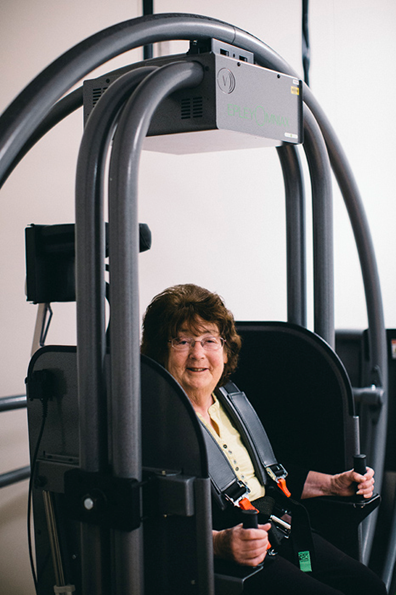
The Epley Omniax Positioning System is one of only 34 in the world and only the second in Australia. It increases accuracy of diagnoses for people with balance disorders. This means they spend less time in hospital and can return to daily activities more quickly.
It is used to assess the characteristic abnormal eye movements (positional nystagmus) which can aid the most accurate assessment and treatment of Benign Paroxysmal Positional Vertigo (BPPV). BPPV is the most common cause of dizziness.
The Epley Omniax Positioning System has also successfully been used when a patient is unable to be assessed and treated in the conventional manner because of other medical conditions, for example arthritis, or larger body types.
Patients are seated in a chair, secured with a harness and slowly moved to various positions. Infrared video goggles record the eye movements and specialist clinicians analyse the results to help diagnose and treat the dizziness. As the system operates on two axes, the clinician is able to precisely position the patient through a 360-degree range in order to assess and treat them.

